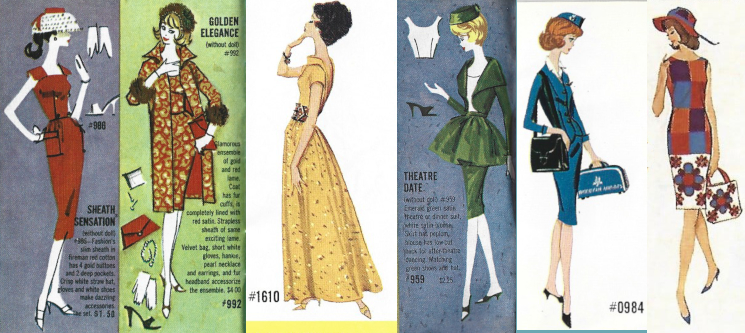
The first, foremost, and most famous source of vintage Barbie illustrations is, of course, the fashion booklet. When we assess the drawings on items like carrying cases, doll packaging, and sewing patterns, our evaluations often center on similarities to and differences from the booklet versions. Within the booklets, there are hundreds of hand-drawn illustrations to admire in incrementally evolving styles, up until photography takes over at the end of the Sixties. In this post we’ll pick through some interesting themes and patterns we observed; you can browse unedited booklets on Constance Ruppender’s Flickr feed, Vintage Toy Advertiser, “and everything else… …too” blog, House of Retro, and elsewhere.
Fashion illustration by 1959
The 1920s and ’30s are regarded as the Golden Age in fashion illustration, according to Cally Blackman in 100 Years of Fashion Illustration. Photography, while technically available, could not yet approach the mood, the mystique, the glamour of the fashion sketch.
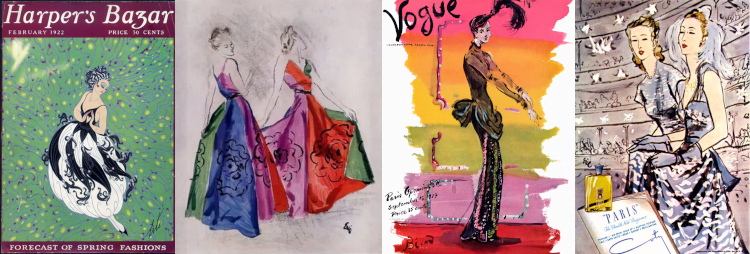
By the Fifties, however, customers wanted the accuracy and detail photography offered, and magazine publishers, even the more artistically-inclined, obliged. The celebrity photographer and his model muse were born–think Bailey and the Shrimp, or Avedon and Dovima–while illustration faded to obscurity, at best used for longstanding campaigns in lingerie or scent, like Eric’s work for Coty perfume, sampled above.
During this time Rene Gruau was fairly ascendant, due in part to his friendship and working relationship with Dior, whose scent campaigns he illustrated for some forty years. Gruau’s bold outlines, flat planes of color, sparse backgrounds, elongated forms, pointed toes, and colorless flesh are among the hallmarks he shares with Barbie’s early illustrators.
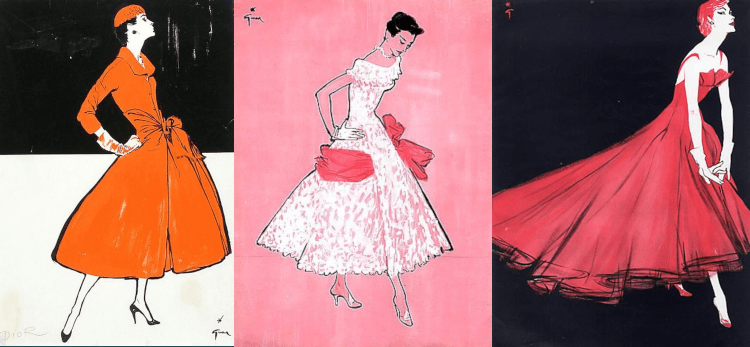
Red, a favorite color of Gruau’s (per Rene Gruau: Master of Fashion Illustration by Chariau and Brubach), was also prominent in Barbie’s early wardrobe.
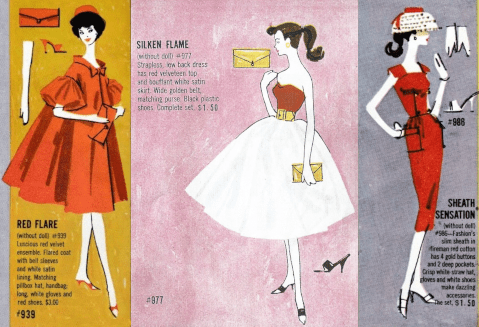
In Barbie: Her Life and Times, author BillyBoy* points out the similarity between this Gruau-drawn Dior lingerie advertisement, circa 1950, and one of the earliest Barbie fashion sketches:
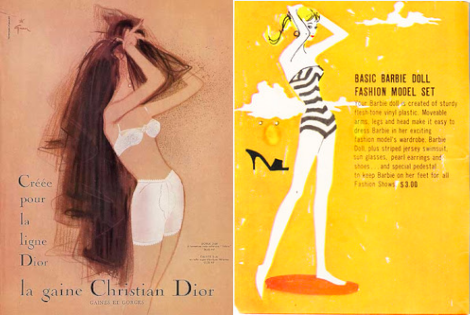
Now we know where things stand in the wider fashion illustration world. Let’s dig into the Mattel booklets.
Evolutions in time
Some categories of Barbie fashions persisted through the years and can be used to summarize the booklet sketching styles all at once. Most prominent are the bathing suits, the most common way that Barbie dolls were sold throughout the Sixties and thus receiving coverage in every fashion booklet.
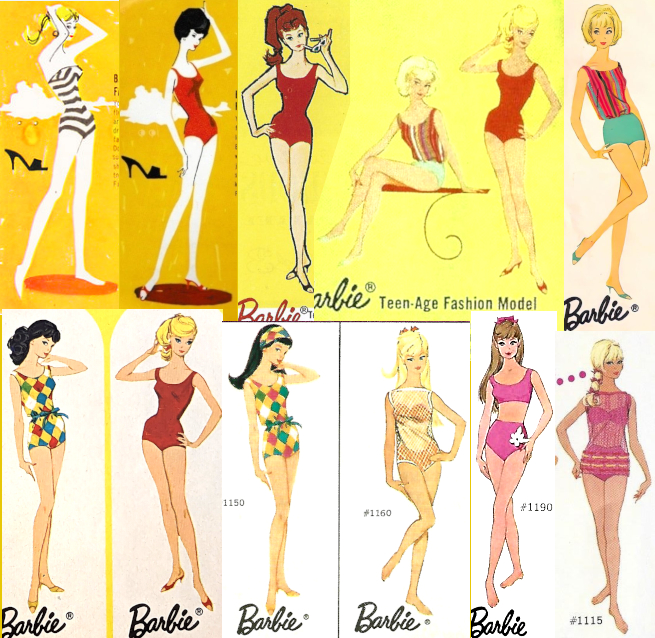
Underthings were another common offering, though they were demoted to the “pak” category for a while, and not shown on a dressed character (more on that below).
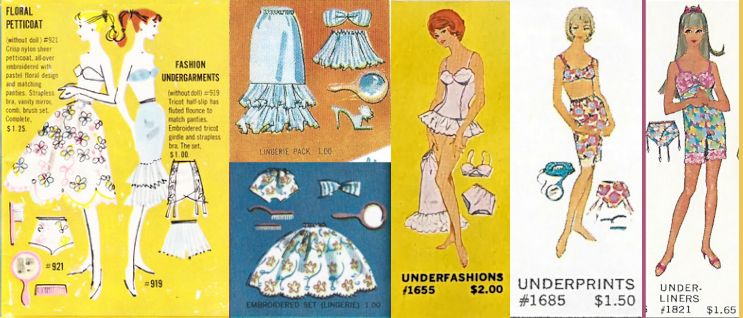
The earliest booklets sometimes used group poses to display multiple ensembles, as shown above left, or even to show the same ensemble in two configurations (jacket on or off, for example); one illustrating a nightgown with and without coordinating peignoir appears at the bottom of the post.
Finally, though she never married, Barbie was frequently seen modeling a bridal ensemble.
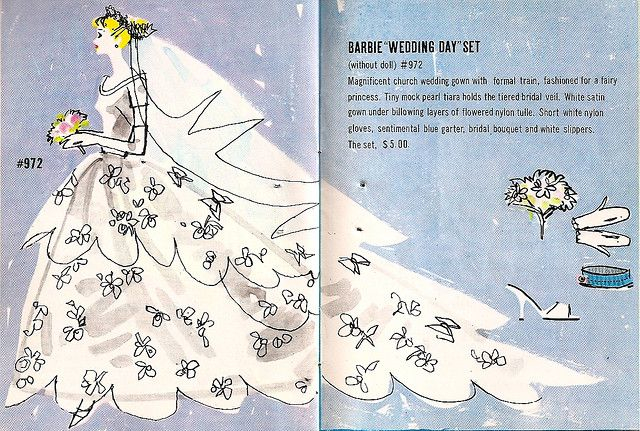

Some stars of the Ponytail era
The early books have a minimal art style: Barbie’s skin lacks color, her face has little detail, the pen strokes appear bold and angular. Some of Barbie’s most-loved vintage fashions were produced in the her first few years and are depicted in this style.
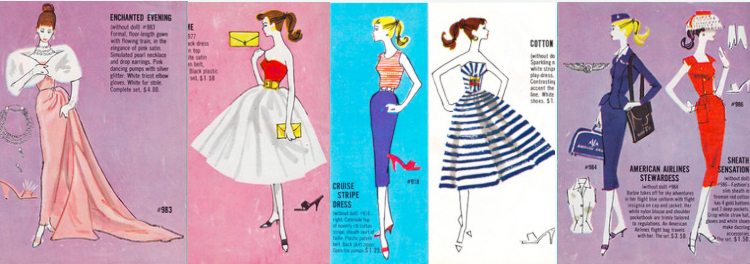
Bubbles rising
When bubble cut Barbie arrived on the scene, she started to model some of the fashions. Our review indicates that bubbles were used to model some of the new ensembles, rather than redrawn existing ones.
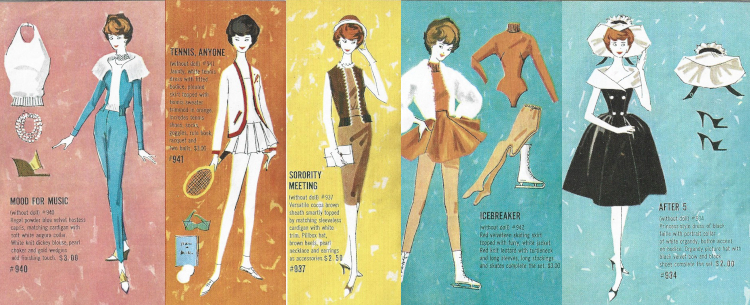
However, redrawing toward more detailed and doll-like depictions did occur subsequently.
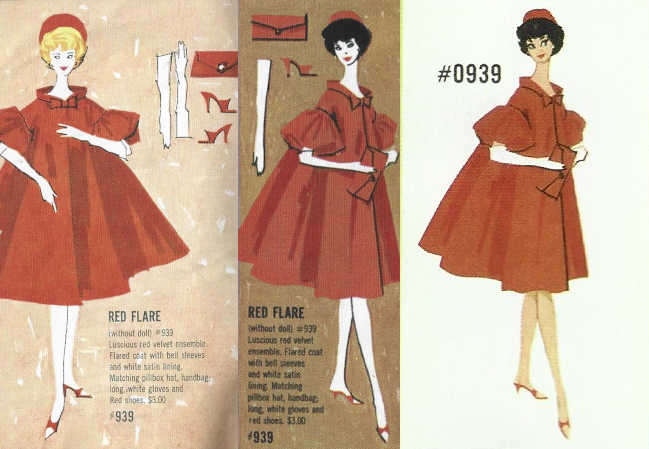
Midge models, too
While not herself a Teen-Age Fashion Model, when Midge hit the scene she took on some of the booklet modeling duties. Midge’s illustration style evolved considerably over those few short years, following the broader trends.
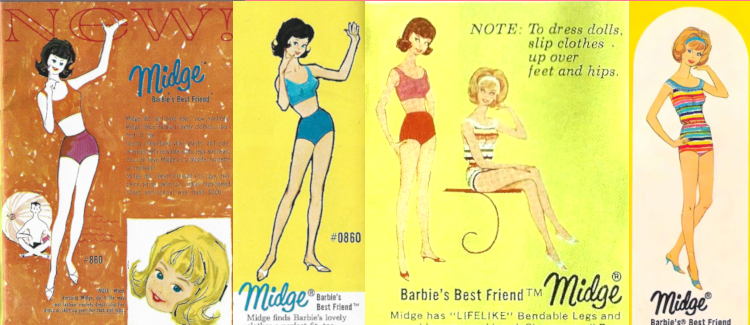
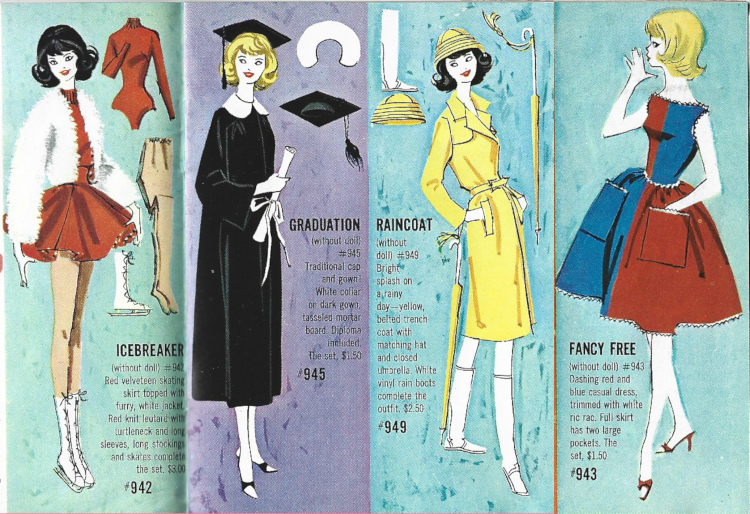
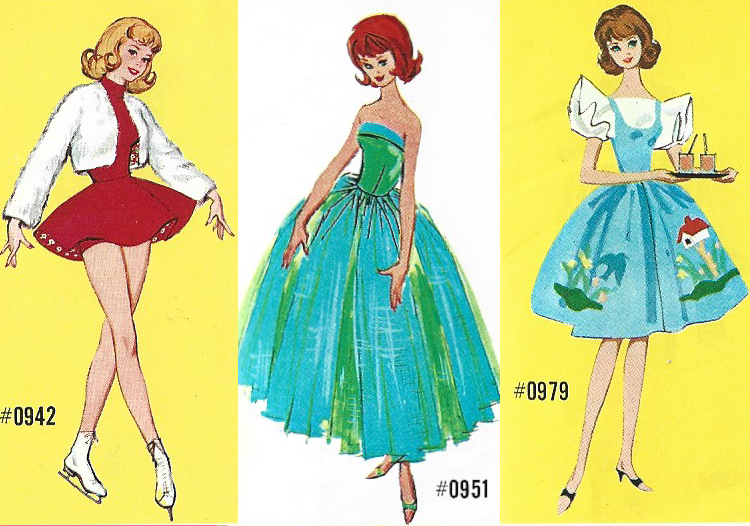
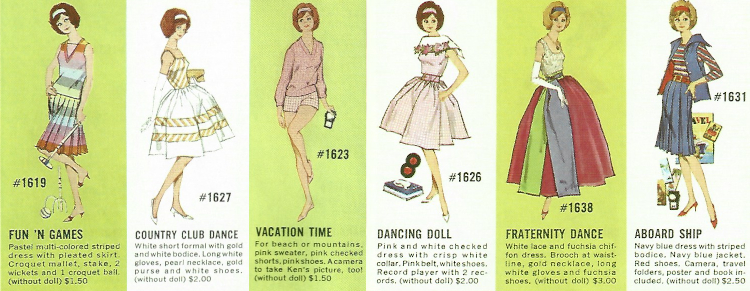
A special Skipper booklet
Skipper’s fashion coordination with Barbie-sized outfits was depicted in a special standalone Skipper booklet, with Barbie, in her matching looks, appearing in uniquely detailed booklet backgrounds.
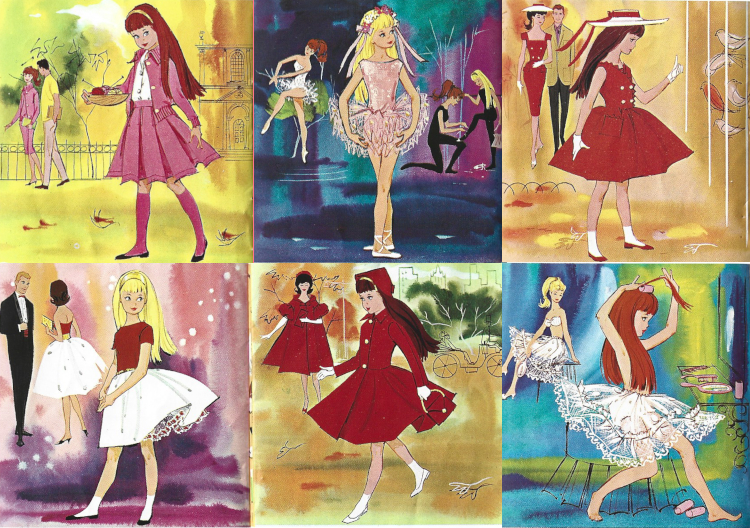
Pak fashions
As a rule, Pak fashions were sketched hanging or lying loose, not on a figure.
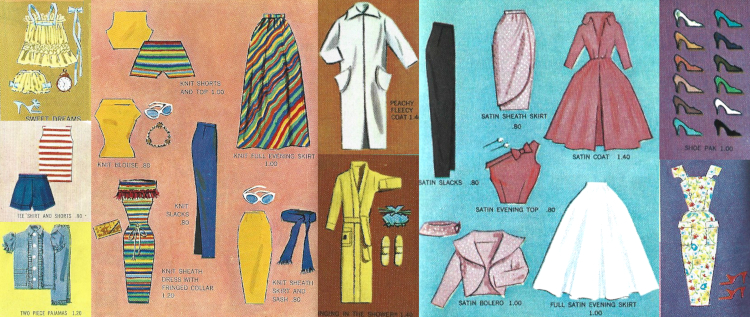
Due to some fashions drifting in and out of the pak classification and other factors, certain pak-associated styles were also modeled by characters.
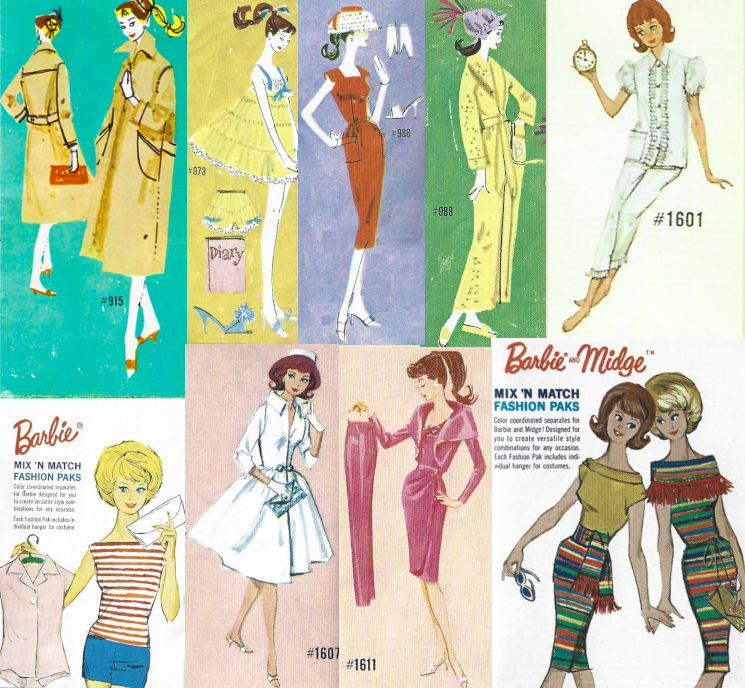
This category also includes the fabulous Golden Evening, shown at the very top of the post.
American Girls
In the bend leg era, some of the poses went next-level (I’m looking at you, Drum Majorette). A newer, more-detailed artistic approach helped to emphasize the high glamour of these years’ couture looks.
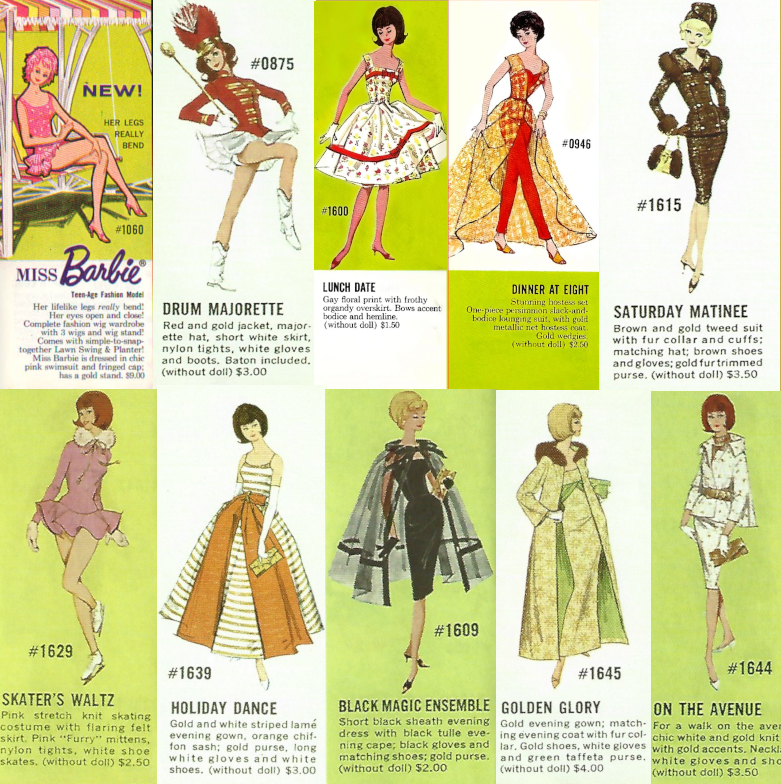
The Move to Mod
Barbie went mod in her final days as an American Girl with a massive wardrobe refresh, and then she did the same thing again the following year with her new T’n’T body. Two “World of Barbie” booklets in our possession show no overlap between the fashions of these years and any previous, so while the style continued to evolve, side-by-side comparisons aren’t as useful; nothing was redrawn for the T’n’T doll, that we could find.
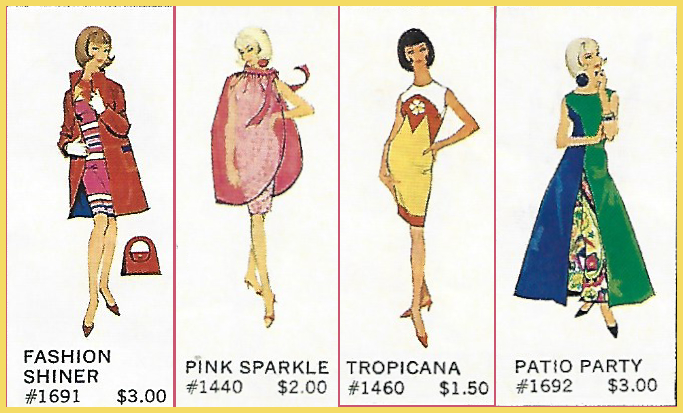
One of our 1966 “World of Barbie” volumes, above, advertises the T’n’T doll but uses American Girl as a model for all the fashions; the second shows the T’n’T model in entirely different ensembles.
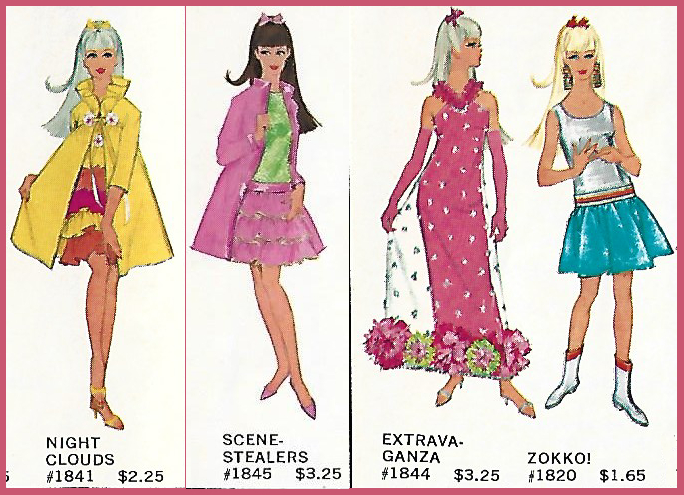
Some photographs had been used in the booklets to advertise gift sets, cases, play sets and other oddities, dating back at least to Fashion Queen. At the end of the Sixties, the booklets pivoted to 100% photography of dressed dolls to advertise the ensembles (and doll-less photographed garments to advertise paks). Doll photography, of course, is an art form all its own, but the booklets’ photographed fashions seem workmanlike to us. We’ll leave that for others to examine.
Until next time, don’t talk to me or my daughter ever again.
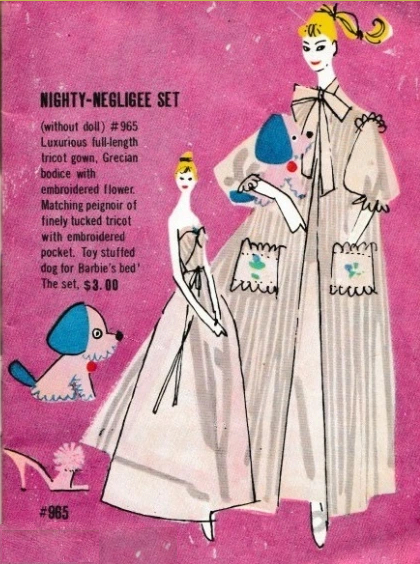
Where to next? This is the most popular post in our category on vintage Barbie illustrations; another popular entry concerns vintage Barbie and friends gift sets, while the most recent post in the category is on the Barbie and Ken Dell Comics. Other top posts on this site include the Many Abodes of Barbie series (currently covering 1962-1969) and our chronicle of early Barbie shoes. Or just head up to the Table of Contents to see more options.

Leave a comment